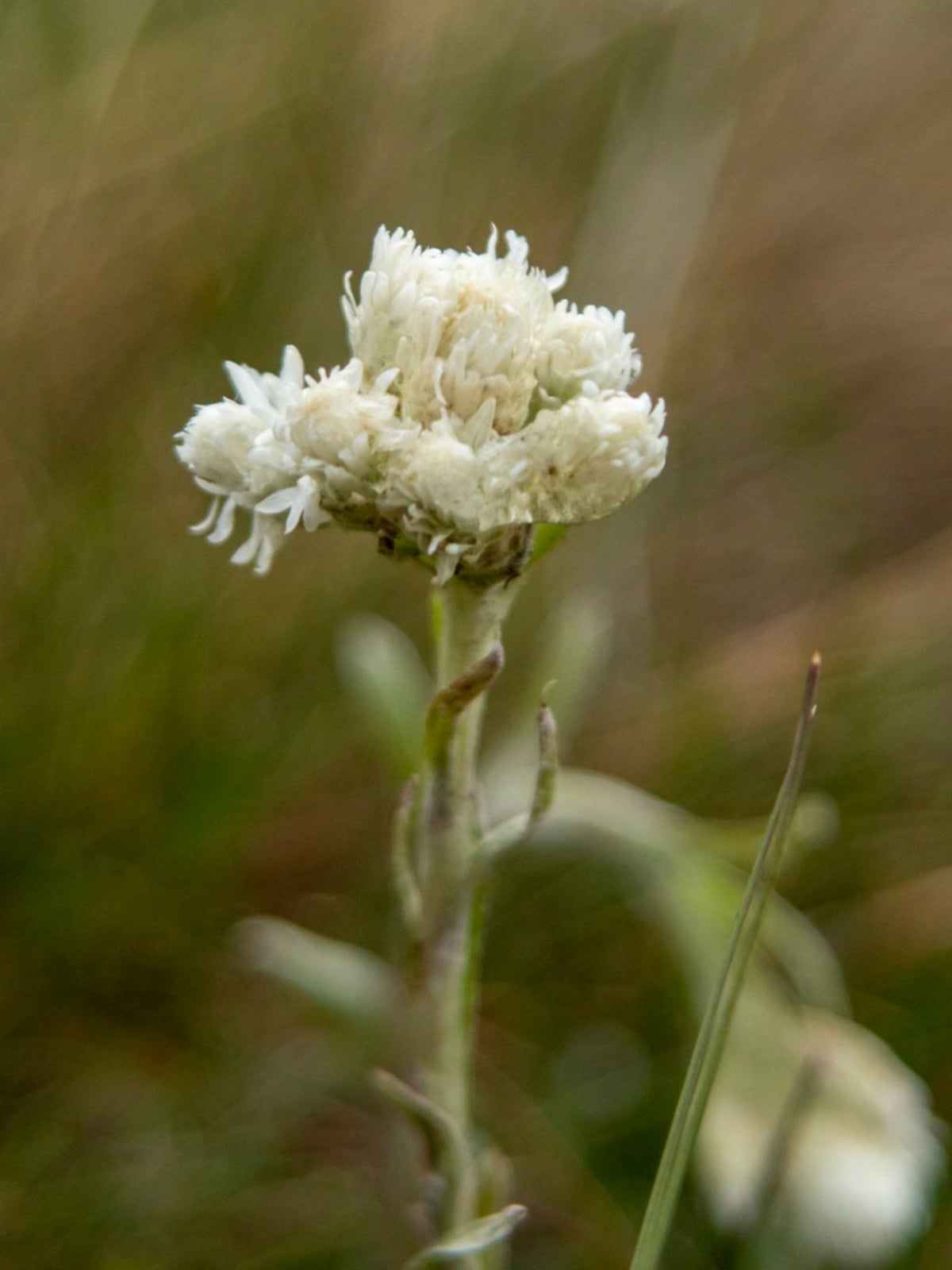Antennaria Pussytoes Info: Tips For Planting Pussytoes Seeds


Gardeners looking for a perennial evergreen ground cover couldn’t find a better choice than Antennaria pussytoes. Lush carpets of gray green leaves followed by sprightly little “cat paws” of pussytoes flowers lend charm and ease of care to the dry, nutrient poor regions of the landscape. Fast growing and readily available, planting pussytoes seeds provides an attractive foil to pathways, rock gardens, and even xeriscape zones.
Antennaria Pussytoes Attributes
Cat lovers will swoon with delight over pussytoes flowers. Pussytoes ground cover is remarkably resistant to disease and pests, including deer and rabbits. It is also an attractor for pollinating insects and a host for the American Lady butterflies. Learn how to grow pussytoes plant for season after season of fool proof texture and greenery. Native plants are always a good choice for the landscape. This is because they are already adapted and hardy to the region and offer no fuss beauty and vigorous growth. Pussytoes ground cover is native to the western United States and Canada. It forms wide clumps over time and colonizes quickly. The tiny gray haired leaves are stacked up on top of each other on slender herbaceous stalks that grow no more than 6 inches (15 cm.) tall. In spring, the charming downy flowers appear. Blooms are white to pink fuzzy clusters resembling cat feet. Some of the species to select are:
- Rosy
- Scented
- Pearly
- Wooly Pussytoes
How to Grow Pussytoes Plant
Site selection is the first consideration for growing pussytoes. Choose a location in full sun with well-draining soil. The plant is hardy to United States Department of Agriculture zones 3 through 9. In cooler regions, the basal leaves tend to die back a bit but will re-sprout in spring. In its native habitat it occurs in meadows, hills, open woods, and dry pastures. The only condition pussytoes cannot tolerate is wet, poorly drained soil. Antennaria pussytoes can be propagated by seed, division, or cuttings. It is remarkably drought tolerant once established but supplemental water for seedlings is a must. Beds and borders, rock gardens ,and walls are all excellent places to display the draping beauty of this plant.
Planting Pussytoes Seeds
Sow seeds in an open frame in spring or fall. You may also opt to start the seed indoors in flats and transplant seedlings outdoors once they have three sets of true leaves. Seed starting mixtures or garden soil are adequate for sowing. Mist seedlings to keep the top few inches (8 cm.) of the soil moist but not soggy. Transplant the seedlings after all danger of frost has passed and once they have hardened off. The biggest problems with this plant are generally related to excess moisture and fungal disease. Allow the top surface of the soil to dry out completely before irrigation. Pussytoes does not need supplemental fertilization. Maintenance may include cutting off the spent spring blooms just before summer to promote a tidier appearance and denser foliage. Divide plants in spring to prevent die back in the center of the clump and produce more of these charming little plants.
Gardening tips, videos, info and more delivered right to your inbox!
Sign up for the Gardening Know How newsletter today and receive a free copy of our e-book "How to Grow Delicious Tomatoes".

Bonnie Grant is a professional landscaper with a Certification in Urban Gardening. She has been gardening and writing for 15 years. A former professional chef, she has a passion for edible landscaping.
-
 Get Ready For A Summer Of Hummers! Grow These Full Sun Hummingbird Plants and Flowers
Get Ready For A Summer Of Hummers! Grow These Full Sun Hummingbird Plants and FlowersIf you’re lucky enough to enjoy a sunny backyard, make sure you are maxing out on your pollinator opportunities and grow these full sun hummingbird plants and flowers
By Tonya Barnett
-
 12 Lush Alternatives To A Lawn For Sustainable Spaces
12 Lush Alternatives To A Lawn For Sustainable SpacesAlternatives to a lawn are beautiful and also beneficial to your local ecosystem and its pollinators. Explore our top picks for plants to replace grass.
By Tonya Barnett